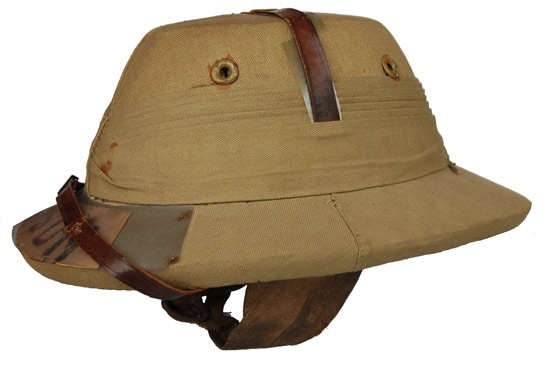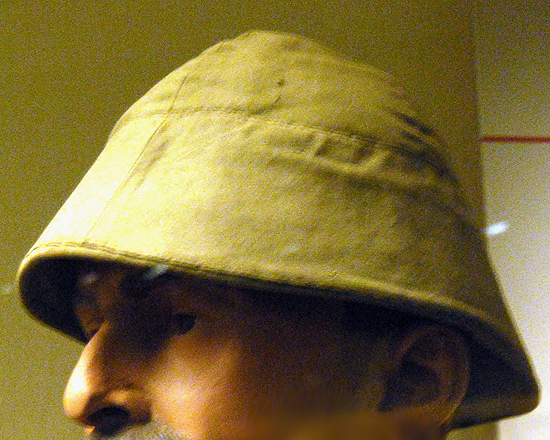A lesser known, but still very rare helmet is the inter-war used British Flying Helmet known as the “Helmet, Cork, Aviation (22C/13),” or more popularly known as the Type “A” Flying Helmet. The “helmet, cork, aviation” was introduced in the early 1920s and reportedly issued only to aircrews based east of Malta. Continue reading
Category Archives: Middle East
Ottoman Turkish Sun Helmets: The Kabalak
Chris Flaherty, lives in London, and has a long-term interest in militaria collecting, curation, preservation and research. He has written extensively on World War I Ottoman Turkish military history for the UK Armourer magazine and Soldier of the Queen (journal).
To discuss the Turkish Kabalak, we must firstly dispel a few myths; some 40 years ago a book on German steel helmets accidentally transposed the Ottoman Turkish contracted M18 helmet, with a visorless version (which made its first appearance after World War I in the hands of the German Freikorps units), both of which had been made by Eisenhüttenwerk Thale.1 Continue reading
British Army Spine Pads
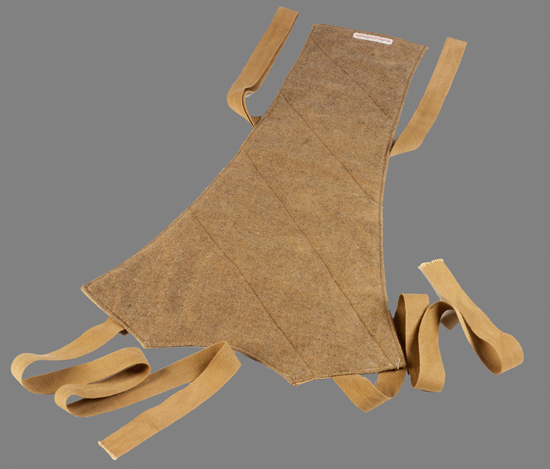
A First World War period British Army issue spine pad. The pad was worn to protect the wearer’s spine from intense heat that was thought to cause heatstroke. (Photo Imperial War Museum, author’s collection)
“The spine pad has become a dull museum piece, and it is probable that specimens are nowadays not easy to find. Yet to those living in tropical areas during the early part of the century and to those serving with the British Army in hot climates during the First World War, memories may be evoked of a piece of cloth of cotton, silk or wool, plain or quilted, several inches wide, attachable to the shirt or coat along the spine, and sometimes with a coloured lining. It is now difficult to accept that this mere piece of cloth could in any way protect from the effects of the sun. But the purpose of the spine pad was so closely linked with the development of ideas concerning body heat, fever and sunstroke, that one must be prepared to explore many early lines of thought for an understanding of its origin and its demise.” 1 So writes E.T. Renbourne , retired Major, Royal Army Medical Corps, in 1956. Continue reading
British Army Neck Curtains
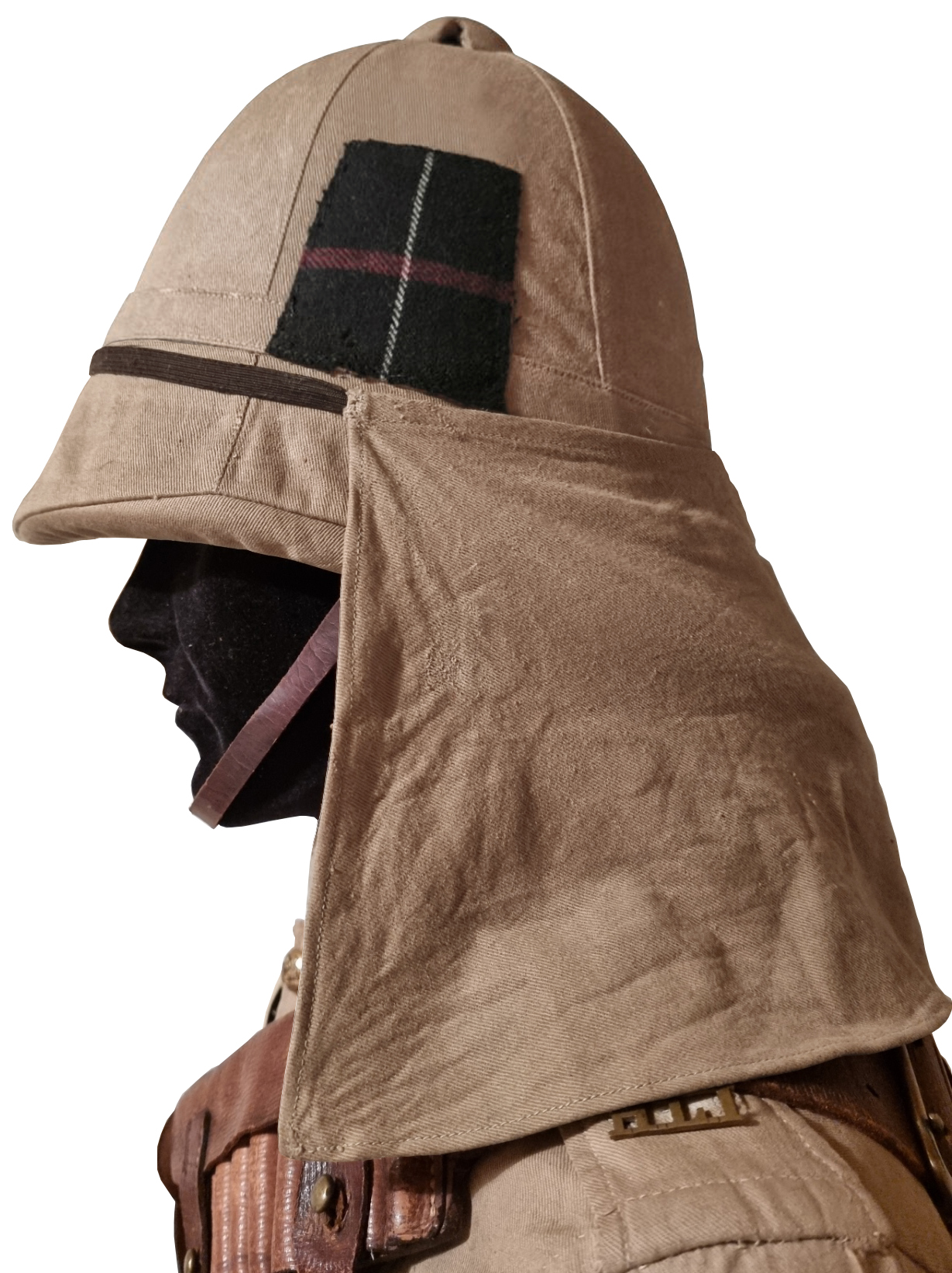
An interesting and rare example of an officer’s Colonial pattern Foreign Service Helmet showing the neck curtain secured by an elastic strap. (Photo courtesy Benny Bough)
“From the earliest times fear of the sun’s rays must have sometimes urged the soldier or traveler to wear down the back of the neck a white handkerchief or handy piece of cloth. The official introduction of a neck curtain, however, appears due to Sir Henry Hardinge, who, in 1842, prior to leaving for India as Viceroy, ordered white cap covers for tropical use, to which was added some time later a white neck curtain.” 1,2
Helmet of the Arab Legion
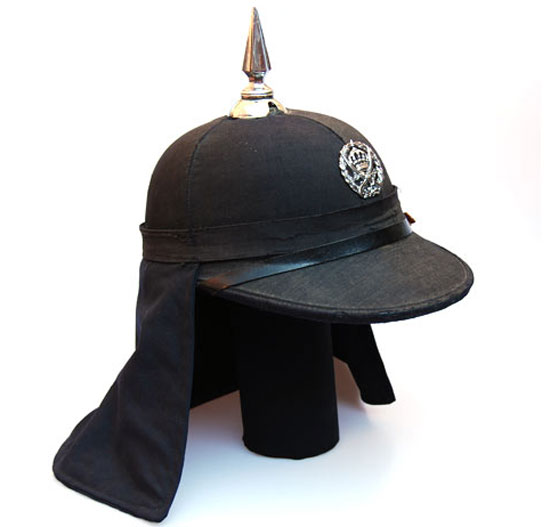
A black cloth covered cork helmet, as used by the Jordanian Army in the 1950s and 1960s. (Author’s collection)
While numerous colonial powers used sun helmets in their respective desert colonies, as well as in post World War I mandates and protectorates, a unique form of sun helmet was used by the local forces in Transjordan – later the Kingdom of Jordan. This respective helmet has no actual name, other than being referred to as the helmet of the Arab Legion, and later the Jordanian National Guard. Continue reading

